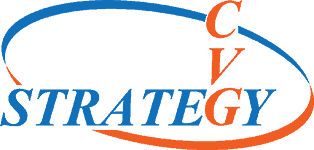
Collaboration and Quality Management are concepts that should come to mind together. It can, however, be difficult to combine teamwork and quality management in a manufacturing or service process. There are challenges involved in bringing all interested parties to the table and engaging them in working together to continuously improve products and services. These challenges can be addressed in a properly implemented Quality Management System such as ISO 9001:2015.
Working Between Departments
Interdepartmental differences in priority, culture, and mindset can create barriers to effective collaboration. Often these differences can create an adversarial perception between teams. By establishing shared goals in achieving quality, trust can be developed that can dissolve these perceived differences.
This is particularly important because honest feedback is a key component of the continuous improvement process. This improved communication can create better working relationships between departments and increase cooperation in increasing overall efficiency of processes. Additionally, this can nurture a better work environment that increases retention of skilled team members.
Collaboration Between Tiers
As with any business undertaking, success begins with the involvement of top management. Leadership must implement a program that addresses the culture of the organization, while promoting a vision for improvement. They should be fully committed to the concepts, goals, and processes of the Quality Management System (QMS) and must seek to understand needs and expectations of all interested parties. Additionally, upper management must also communicate these goals and processes to the rest of the company and implement training as these change.
Working With Suppliers
Establishing strong relationships with trusted and qualified suppliers is an excellent way to improve a business’s competitive performance. By sharing quality management goals with an organization’s supply chain, clarification of roles and expectations can be accomplished. This clarity can work to reduce risks by maintaining long term goals and strategies. It can also provide improvements by identifying and eliminating waste, increasing process efficiencies, and reducing lead times.
Developing Collaborative Processes
A good starting point for developing collaboration and quality management processes is during the design and development phase of a new product or service. A properly executed design and development plan should consider inputs from a number of sources. These would include sales, marketing to communicate customer requirements. It would necessitate reviewing information from similar product developments in the past and consider potentials and limitations of emerging technologies.
Once an initial concept has been achieved iterative design reviews can surmise the adequacy of existing manufacturing facilities, manufacturing processes, to produce a quality product. Consideration can also be given to the ability of existing supply chain assets to provide required materials.
CVG Strategy Experts
Our Exemplar Global Lead Auditor Consultants can help you with implementing a quality management system, which will include a risks and opportunities procedure. CVG Strategy has prepared, trained and implemented quality management systems for manufacturing companies for over a decade. We can assist in the implementation of ISO 9001:2015, AS9100, ISO 13485, and ISO 14971 programs among others.
CVG Strategy is a consultancy offering coaching, mentoring, training and program development focused on areas including Business Process Improvement, ITAR and Export Compliance, Cyber Security and Product Test and Evaluation.


